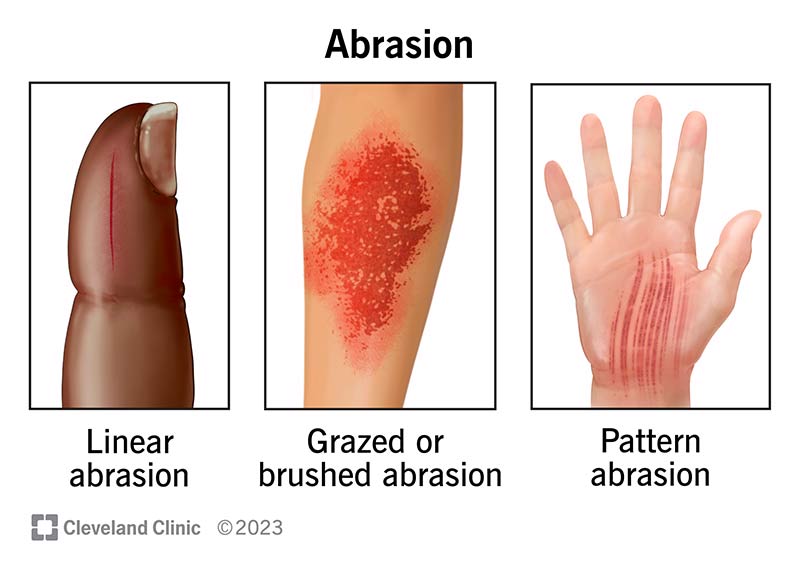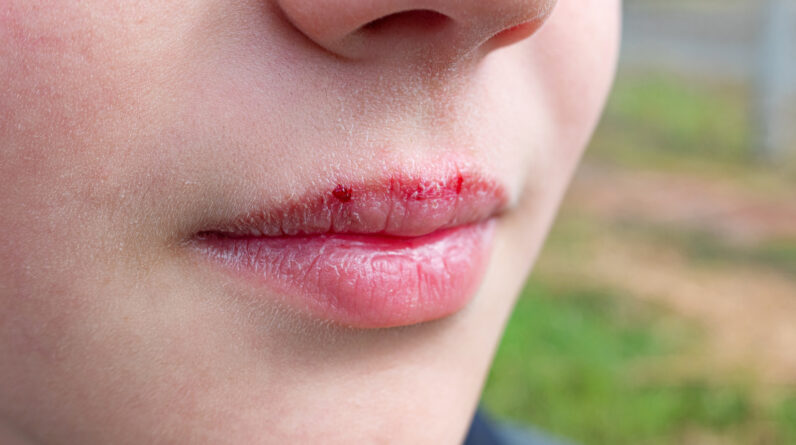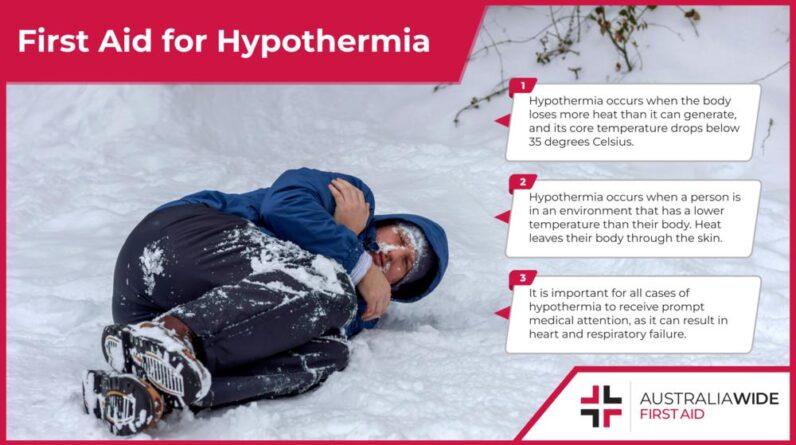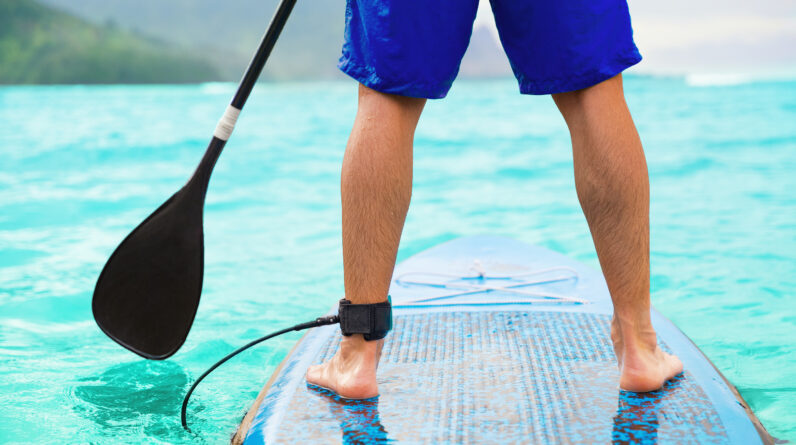
Imagine submerging yourself in the crystal clear waters, feeling the exhilaration as you glide through the waves, participating in your favorite water sport. While the fun and excitement of these activities are unmatched, they also pose a risk of cuts and abrasions. Whether it’s from sharp rocks, coral reefs, or even rough equipment, these injuries can put a damper on your aquatic adventures. But fret not, as this article will guide you on how to prevent and effectively treat cuts and abrasions in water sports, ensuring you can continue to enjoy the thrill without any hindrances.
Prevention Methods
When it comes to preventing cuts and abrasions while engaging in water sports, there are several effective methods you can employ to keep yourself safe. Let’s take a look at some of the most important prevention methods.
Wear Protective Gear
One of the best ways to prevent cuts and abrasions is to wear the appropriate protective gear. Depending on the specific water sport you are engaged in, this may include items such as helmets, goggles, gloves, wetsuits, or rash guards. Protective gear serves as a barrier between your skin and potential hazards, reducing the risk of injuries.
Apply Waterproof Bandages
In the event that you do sustain a minor cut or abrasion, it’s crucial to apply a waterproof bandage to protect the wound from further damage and to prevent bacteria from entering. Waterproof bandages are specially designed to stay in place even when exposed to water, allowing you to continue enjoying your water sports activities without worrying about the wound getting infected.
Use Proper Technique
Using the proper technique while engaging in water sports is vital in preventing cuts and abrasions. Whether you are swimming, surfing, or diving, it is essential to learn and practice the correct techniques to minimize the risk of injuries. Proper technique not only helps you become more efficient in your chosen water sport but also reduces the likelihood of accidents that can result in cuts or abrasions.
Avoid Sharp Objects
To prevent cuts and abrasions, it’s important to be mindful of sharp objects in your surroundings. When swimming or participating in water sports, be aware of potential hazards such as sharp rocks, coral reefs, or even broken glass. Avoid areas where these hazards may be present and always keep an eye out for any dangers that may pose a risk to your safety.
Assess Water Conditions
Before entering the water, take the time to assess the current water conditions. Pay attention to factors such as wave strength, underwater visibility, and any signs of hazardous marine life. Understanding the water conditions can help you make informed decisions about whether it is safe to engage in your chosen water sport or if it’s best to wait for more favorable conditions.
Maintain Proper Hygiene
Maintaining proper hygiene is not only important for overall health but also plays a significant role in preventing infections from cuts and abrasions. After engaging in water sports, make sure to thoroughly clean any wounds with mild soap and clean water. This will help remove any dirt or bacteria that may have entered the wound, reducing the risk of infection.
Stay Vigilant
Staying vigilant and attentive to your surroundings is crucial in preventing cuts and abrasions. Always be aware of the people around you and any potential hazards that may arise. Look out for any signs or markers indicating risk areas or unsafe conditions. Keeping a watchful eye will help you react quickly and take necessary precautions to prevent injuries.
Stay Updated with First Aid Training
Having knowledge of first aid techniques can make a significant difference in preventing and treating cuts and abrasions. It is advisable to stay updated with first aid training, specifically focusing on water-related injuries. Understanding how to properly bandage wounds, control bleeding, and perform CPR can be life-saving in emergency situations.
Ensure Proper Supervision
When participating in water sports, especially if you are a beginner or engaging in activities that are considered more dangerous, it is essential to ensure proper supervision. Having an experienced instructor or a qualified individual on-site who can guide and supervise your activities greatly minimizes the risk of accidents and injuries. Their knowledge and expertise can help prevent potential cuts and abrasions.
Avoid High-Risk Activities
To reduce the risk of cuts and abrasions, it is advisable to avoid engaging in high-risk activities unless you have the proper experience and training. High-risk activities in water sports may involve extreme conditions, challenging environments, or potentially dangerous maneuvers. It’s important to prioritize your safety and engage in activities that are within your skill level and comfort zone.
Preventive Tips for Specific Water Sports
Different water sports present unique challenges and risks, requiring specific preventive measures to minimize the chance of cuts and abrasions. Let’s explore some preventive tips for popular water sports.
Swimming
Swimming is a widely enjoyed water sport and provides ample opportunities for both leisure and competitive activities. To prevent cuts and abrasions while swimming, it is important to avoid areas with sharp rocks or coral reefs. Additionally, applying a layer of waterproof sunscreen before swimming can protect your skin from both the sun’s harmful rays and potential irritants in the water.
Surfing
Surfing enthusiasts should prioritize wearing proper protective gear such as rash guards or wetsuits to prevent cuts and abrasions from contact with the surfboard or rocks below the water’s surface. Additionally, using wax on the surfboard deck can provide better grip, reducing the risk of slipping and sustaining injuries.
Diving
When engaging in diving, ensuring the proper fit and condition of your diving equipment is crucial. Wearing a well-fitted wetsuit and proper diving gloves can protect your skin from cuts caused by sharp objects or marine life. It’s also important to practice good buoyancy control and avoid contacting delicate coral or marine organisms.
Snorkeling
Snorkeling is a popular activity that allows individuals to explore the wonders of the underwater world. To prevent cuts and abrasions while snorkeling, it’s essential to swim with caution and avoid touching or standing on coral reefs. We recommend wearing fins to minimize the risk of accidentally kicking or brushing against corals or other potentially sharp objects.
Water Polo
Water polo is a fast-paced and physically demanding water sport. To prevent cuts and abrasions during water polo matches, players should wear appropriate protective gear such as caps and suits to minimize the impact of contact with other players. Additionally, keeping fingernails trimmed short can help prevent accidental scratching or cuts to both yourself and other players.
Kayaking
Kayaking offers a peaceful and adventurous way to enjoy the water. To prevent cuts and abrasions while kayaking, it is important to paddle cautiously, avoiding contact with sharp rocks or debris. Wearing protective gloves can also provide an extra layer of defense against potential injuries from the paddle or any unexpected hazards in the water.
Canoeing
Similar to kayaking, canoeing requires vigilance and caution to prevent cuts and abrasions. When canoeing, it is advisable to avoid shallow waters with potentially sharp debris or rocky surfaces. Additionally, maintaining proper balance and paddling technique can help minimize the risk of capsizing or colliding with obstacles in the water.
Water Skiing
Water skiing is an exhilarating water sport that requires skiers to be mindful of their surroundings. To prevent cuts and abrasions while water skiing, ensure that the equipment is in good condition and properly fitted. Wearing protective gear, such as helmets and life jackets, can also provide an added layer of safety. It’s important to be aware of other boaters and avoid areas with underwater hazards.
Jet Skiing
Jet skiing combines speed and maneuverability, making it essential to take preventive measures to avoid cuts and abrasions. Wearing protective gear, including a life jacket and goggles, is crucial. It’s important to maintain a safe distance from other watercraft and be mindful of your speed, as excessive speed can increase the risk of accidents and injuries.
Paddleboarding
Paddleboarding offers a serene and balancing water sport experience. To prevent cuts and abrasions while paddleboarding, consider wearing protective clothing, such as rash guards or wetsuits. It’s important to be mindful of shallow areas and potentially sharp objects in the water. Engaging in paddleboarding with proper technique and balance can help minimize the risk of falls and injuries.

This image is property of hytape.com.
First Aid for Cuts and Abrasions
Despite our best efforts, injuries can sometimes occur while engaging in water sports. Knowing how to provide prompt and appropriate first aid for cuts and abrasions is vital. Let’s explore the steps involved in providing first aid for such injuries.
Stop the Bleeding
In the event of a cut, the first step is to apply direct pressure to the wound using a clean cloth or gauze. Maintain pressure until the bleeding stops, or for at least 10 minutes. Elevating the injured area above the heart can also help reduce bleeding.
Clean the Wound
Once the bleeding has stopped, it’s important to clean the wound thoroughly to minimize the risk of infection. Use clean water or saline solution to flush out any debris or foreign objects from the wound. Gently pat the area dry with a clean cloth or sterile gauze.
Apply Antibiotic Ointment
After cleaning the wound, apply a thin layer of antibiotic ointment to help prevent infection. This will create a barrier between the wound and bacteria, promoting healing.
Cover the Wound
Using a sterile bandage or dressing, cover the wound to protect it from further damage and reduce the risk of infection. Ensure that the bandage is large enough to fully cover the area and secure it in place with medical tape or adhesive, ensuring that it is not too tight.
Use Sterile Dressings
When changing the dressings, it is important to use sterile dressings to reduce the risk of introducing bacteria into the wound. Dispose of the old dressing properly and ensure that your hands are clean before applying a new one.
Change Dressings Regularly
Regularly change the dressings to maintain a clean and sterile environment for the wound to heal. This will also allow you to closely monitor the healing progress and assess for any signs of infection.
Avoid Picking at Scabs
Although it may be tempting to pick at scabs, it is important to let them come off naturally. Picking at scabs can delay the healing process and increase the risk of infection or scarring.
Manage Pain and Swelling
Over-the-counter pain medications or topical creams can be used to manage pain and reduce swelling associated with cuts and abrasions. Follow the instructions provided and consult a healthcare professional if the pain or swelling persists or worsens.
Seek Medical Attention
While most cuts and abrasions can be effectively treated at home with proper first aid, it is important to seek medical attention in certain cases. If the wound is deep, does not stop bleeding, shows signs of infection (such as redness, warmth, or pus), or if there is a risk of foreign objects in the wound, medical attention should be sought.
Follow-up Care
Once you have received medical attention for a cut or abrasion, it is important to follow any instructions or treatment plans provided. This may involve regular wound cleaning, changing dressings, or taking prescribed medications. Adhering to the recommended follow-up care will promote proper healing and reduce the risk of complications.
Tips for Healing and Recovery
In addition to providing immediate first aid for cuts and abrasions, there are several tips you can follow to aid in the healing and recovery process. Let’s explore some helpful tips for promoting healing and ensuring a smooth recovery.
Keep the Wound Clean and Dry
To promote healing, it is crucial to keep the wound clean and dry. Avoid submerging the wound in water, either during water sports or when bathing, as moisture can impede the healing process and increase the risk of infection. Protect the wound with a waterproof dressing when engaging in water sports and shower with care to prevent direct contact with the wound.
Avoid Submerging the Wound in Water
As mentioned earlier, it’s important to avoid submerging the wound in water until it has fully healed. Immersing the wound in water can introduce bacteria and potentially lead to infection. Wait until the wound has healed sufficiently before engaging in water activities that involve prolonged submersion.
Promote Blood Circulation
Proper blood circulation is essential for the healing process. Regularly engage in low-impact exercises that promote blood circulation, such as walking or performing gentle stretches. Consult with a healthcare professional to determine appropriate exercises based on the location and severity of the wound.
Optimize Nutrition
A healthy diet can significantly aid the healing and recovery process. Ensure you are consuming a balanced diet rich in vitamins, minerals, and protein to provide essential nutrients for wound healing. Incorporate foods such as lean proteins, fruits, vegetables, and whole grains into your meals.
Stay Hydrated
Staying hydrated is vital for overall health and plays an essential role in the healing process. Drink an adequate amount of water throughout the day to keep your body hydrated and help maintain optimal wound healing conditions.
Follow a Rehabilitation Plan
If the cut or abrasion results in impairment of mobility or functionality, following a rehabilitation plan provided by a healthcare professional may be necessary. This may involve specific exercises, physical therapy, or occupational therapy to aid in the full recovery of the affected area.
Monitor for Signs of Infection
Throughout the healing process, it is important to monitor the wound for any signs of infection. Redness, increased pain, swelling, discharge of pus, or fever may indicate an infection. If any of these symptoms are present, seek medical attention promptly.
Manage Itching
As the wound heals, it is common for it to become itchy. However, scratching the wound can introduce bacteria and slow down the healing process. To manage itching, you can try gently patting or applying a cold compress to the area. Over-the-counter anti-itch creams or oral antihistamines may also provide relief, but consult a healthcare professional before using any medication.
Maintain Patience and Consistency
Healing and recovery take time, so it’s important to remain patient and consistent in your wound care routine. Stick to the recommended treatment plan, follow your healthcare professional’s guidance, and maintain good overall health practices to support the healing process effectively.
Seek Professional Advice
If you have any concerns or questions regarding the healing and recovery of your wound, it is always best to seek professional advice. Healthcare professionals can provide personalized guidance based on the specific nature of your injury and help address any concerns you may have.
This image is property of my.clevelandclinic.org.
Preventing Common Complications
While proper prevention methods, first aid, and post-injury care significantly reduce the risk of complications, it’s important to be aware of potential complications that may arise. Understanding these complications can help you take additional preventive measures and seek timely medical attention if needed. Let’s explore some common complications associated with cuts and abrasions in water sports.
Infection
Infection is the most common complication associated with cuts and abrasions. Bacteria can enter the wound and cause an infection if proper wound care is not followed or if the wound is exposed to unsanitary conditions. Signs of infection include increased pain, redness, swelling, warmth, or the presence of pus. Prompt medical attention is necessary to prevent the infection from spreading.
Delayed Healing
In some cases, cuts and abrasions may take longer to heal due to various factors such as the severity of the injury, underlying medical conditions, poor wound care, or compromised immune system. Delayed healing can prolong recovery time and increase the risk of complications. Close monitoring and adherence to the recommended wound care routine can help promote timely healing.
Scarring
Depending on the depth and extent of the cut or abrasion, scarring may occur during the healing process. Scarring can vary from minor discoloration to more significant and noticeable marks. Proper wound care and regular follow-up visits with a healthcare professional can help minimize the appearance of scars. Consult with a dermatologist or plastic surgeon for advice on scar management if necessary.
Hematoma
A hematoma refers to a localized collection of blood outside the blood vessels, usually due to internal bleeding within the tissues. Hematomas may develop as a result of trauma to blood vessels during the injury. Depending on the size and location, hematoma may require medical intervention, such as drainage, to promote proper healing.
Nerve Damage
In more severe cases, cuts and abrasions can result in nerve damage. Nerve damage may lead to temporary or permanent loss of sensation, weakness, or altered function in the affected area. If you experience any abnormal sensations or weakness, seek immediate medical attention for appropriate evaluation and management.
Allergic Reactions
Some individuals may be allergic to certain materials or substances used in wound care, such as bandages, adhesive, or antibiotic ointments. Allergic reactions can manifest as redness, itching, or swelling around the wound. If you suspect an allergic reaction, discontinue the use of the product and seek medical advice.
Tetanus
Tetanus is a bacterial infection caused by the bacterium Clostridium tetani. It can enter the body through a wound and lead to severe muscle stiffness and spasms. If your wound is dirty, deep, or caused by a high-risk object (such as a rusty nail), it is important to ensure that your tetanus vaccination is up to date. Seek medical attention for further guidance regarding tetanus prophylaxis.
Foreign Object Retention
In some cases, a foreign object, such as a piece of debris or equipment, can become lodged in the wound and may require medical intervention for removal. If you suspect that a foreign object is present, do not attempt to remove it yourself. Seek medical attention to prevent further complications.
Cellulitis
Cellulitis is a bacterial skin infection that can develop as a complication of a cut or abrasion. It typically presents as redness, swelling, warmth, and pain in the affected area. Prompt medical attention is necessary to prevent the infection from spreading and to receive appropriate antibiotic treatment.
Keloids
Keloids are an overgrowth of scar tissue that extends beyond the boundaries of the original wound. They are more common in individuals with darker skin types and may appear as raised, thickened areas. Treatment options for keloids may include silicone sheets, corticosteroid injections, or surgical interventions. Consult with a dermatologist or plastic surgeon for guidance on keloid management if needed.
Preventive Measures to Reduce Complications
To minimize the risk of complications associated with cuts and abrasions, it is important to follow preventive measures and practice proper wound care. Let’s explore some preventive measures that can reduce the likelihood of complications.
Proper Dressing Techniques
When dressing a wound, ensure that you are using clean, sterile dressings, and adhere to proper dressing techniques. This includes washing hands before and after dressing changes, not touching the inside of the dressing, and securing the dressing with appropriate medical tape or adhesive. Proper dressing techniques help maintain a clean and sterile environment for the wound.
Good Personal Hygiene
Maintaining good personal hygiene is essential when preventing complications. Regularly washing your hands with soap and clean water helps prevent the spread of bacteria. Avoid touching or picking at wounds, as this can introduce bacteria and delay the healing process.
Optimal Wound Care
Proper wound care is crucial in minimizing the risk of complications. This includes cleaning the wound gently with clean water or saline, avoiding harsh chemicals or substances, and moisturizing the surrounding skin to prevent excessive dryness or cracking. Adhere to the recommended wound care routine provided by a healthcare professional and seek their guidance when necessary.
Seek Medical Attention if Needed
If you notice any signs of infection, delayed healing, or other worrying symptoms, it is important to seek medical attention promptly. Timely medical intervention can help prevent complications and ensure appropriate treatment.
Manage Risk Factors
Identify and manage any risk factors that may increase the likelihood of complications. For example, individuals with underlying health conditions, compromised immune systems, or poor circulation may be at higher risk. Discuss any risk factors with healthcare professionals and follow their guidance to minimize potential complications.
Avoid Excessive Sun Exposure
Excessive sun exposure can lead to sunburn, which can delay healing and increase the risk of complications in wounds. Protect your healing wounds from direct sunlight by applying sunscreen or covering them with clothing or a sterile dressing.
Proper Nutrition
Maintaining optimal nutrition is essential for wound healing. Ensure you are consuming a balanced diet rich in vitamins, minerals, and protein. If needed, consult with a healthcare professional or dietitian for personalized dietary recommendations that support wound healing.
Reduce Stress
Chronic stress can have a negative impact on wound healing and overall health. Practice stress-reducing techniques such as deep breathing exercises, meditation, or engaging in activities that bring you joy. Prioritizing self-care and managing stress effectively can support the healing process.
Monitor for Unusual Symptoms
Pay attention to any unusual symptoms or changes in the wound, such as increased pain, redness, swelling, warmth, or discharge. If you notice any concerning symptoms, seek medical attention for further evaluation and guidance.
Regular Follow-ups
Regular follow-up visits with healthcare professionals are important to monitor the progress of wound healing and address any concerns or questions you may have. These appointments allow for timely intervention and adjustments to the treatment plan if necessary.
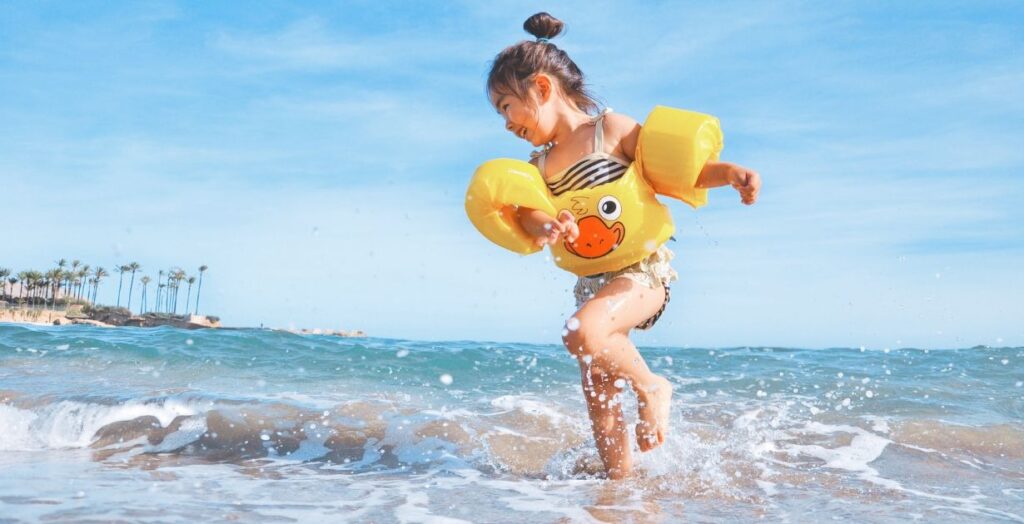
This image is property of www.safeandsoundhealth.co.uk.
Expert Advice on Preventing and Treating Cuts and Abrasions
Obtaining expert advice from medical professionals, experienced athletes, instructors, and individuals with first-hand experience is invaluable when it comes to preventing and treating cuts and abrasions in water sports. Let’s explore some sources of expert advice.
Consulting with Medical Professionals
Medical professionals, such as doctors, nurses, and dermatologists, can provide expert advice on preventing, treating, and managing cuts and abrasions. They possess the knowledge and expertise to guide you in proper wound care techniques, recommend appropriate treatments, and address any specific concerns you may have.
Getting Advice from Experienced Athletes
Experienced athletes who engage in water sports can offer valuable insights and advice based on their personal experiences. Their knowledge of techniques, equipment, and preventive measures can provide you with practical tips to enhance your safety while enjoying water sports.
Safety Tips from Water Sport Instructors
Water sport instructors are trained to prioritize safety and can provide guidance specific to the sport you are engaging in. They have expertise in teaching proper techniques, assessing water conditions, and implementing safety protocols. Don’t hesitate to ask for their safety tips and advice before venturing into water sports.
Learning from Survivors of Water Sport Accidents
Survivors of water sport accidents often share their experiences and lessons learned. Their firsthand accounts can serve as powerful reminders of the importance of preventive measures and the potential consequences of neglecting safety. Listening to their stories can help raise awareness and encourage others to prioritize safety.
Insights from Sports Medicine Specialists
Sports medicine specialists have in-depth knowledge of injuries associated with water sports. They can provide valuable insights into injury prevention, rehabilitation, and overall health maintenance for individuals participating in water sports. Consulting with a sports medicine specialist can help optimize your performance and reduce the risk of injuries.
Advice from First Aid and Emergency Response Personnel
First aid providers and emergency response personnel are skilled in providing immediate care in emergency situations. Their experience and expertise equip them to offer advice on first aid techniques, injury prevention, and emergency response plans. Engaging in discussions with these professionals can enhance your preparedness and confidence in handling water sport-related injuries.
Guidance from Dermatologists
Dermatologists specialize in the diagnosis and treatment of skin conditions and can offer expert advice on wound care, infection prevention, and scar management. Consulting with a dermatologist can provide you with personalized guidance and recommendations based on your specific skin type and the nature of the injury.
Tips from Physical Therapists
Physical therapists play a crucial role in the rehabilitation and recovery process following injuries. They can provide advice on exercises, techniques, and strategies to restore strength, mobility, and function. Consulting with a physical therapist can help ensure a safe and effective recovery from water sport-related injuries.
Shared Experiences of Water Sport Enthusiasts
Water sport enthusiasts who have encountered cuts and abrasions may share their experiences, tips, and preventive measures. Online forums, social media groups, and community events provide platforms for individuals to share their stories and insights. Engaging with these communities can help foster a sense of camaraderie and enable the exchange of valuable knowledge.
Educational Resources from Nonprofit Organizations
Nonprofit organizations dedicated to water safety and the prevention of water-related injuries often provide educational resources, guidelines, and training programs. These resources can offer comprehensive information on preventive measures, first aid techniques, and general safety guidelines specific to water sports. Take advantage of these resources to enhance your knowledge and understanding of water sport safety.
Preventive Maintenance of Equipment and Facilities
Proper maintenance of equipment and facilities is essential for ensuring the safety and well-being of individuals participating in water sports. Let’s explore some preventive maintenance measures that can be taken.
Inspecting and Repairing Gear
Inspecting and repairing gear regularly is crucial to ensure its functionality and reliability. Check for any signs of damage or wear and tear in equipment such as surfboards, diving gear, paddleboards, or water safety equipment. Promptly repair or replace any damaged gear to prevent accidents or injuries.
Properly Storing and Maintaining Equipment
Proper storage and maintenance of equipment help prolong its lifespan and preserve its performance. Ensure that water sports equipment is stored in a dry and secure location to prevent damage from environmental factors. Follow manufacturer guidelines for maintenance, such as rinsing gear with fresh water after use and regularly checking and replacing worn-out parts or accessories.
Ensuring Clean and Safe Water
Regularly testing water quality and ensuring clean and safe water is essential for preventing waterborne illnesses and infections. Implement proper filtration and disinfection systems to maintain water quality standards. Regularly monitor water conditions and take necessary measures, such as closing swimming areas or advising caution when water conditions are unsafe.
Regular Facility Inspections
Facilities used for water sports should be inspected regularly for any potential hazards or maintenance issues. This includes checking for sharp edges on structures, loose fittings, or surfaces that may pose risks to participants. Address any identified hazards promptly to reduce the likelihood of accidents.
Updating Safety Protocols
Staying up-to-date with safety protocols and guidelines is essential for maintaining a safe environment for water sports. Regularly review and update safety procedures in accordance with industry standards and best practices. Ensure that staff and participants are aware of and adhere to these protocols.
Investing in Quality Equipment
Investing in high-quality equipment minimizes the risk of malfunctions and accidents. Choose equipment that meets safety standards and is designed for the specific water sport in which you are participating. Quality equipment often offers enhanced durability, reliability, and performance.
Implementing Safety Measures at Resorts and Parks
Resorts, parks, and recreational facilities that offer water sports should implement comprehensive safety measures. This includes providing trained lifeguards, adequate safety equipment, clear signage indicating risks, and educational materials for participants. Regular safety audits and assessments should be conducted to identify any areas for improvement.
Promoting Safety Culture within Water Sport Communities
Promoting a culture of safety within water sport communities is crucial for preventing injuries and accidents. Encourage participants, instructors, and enthusiasts to prioritize safety, engage in educational programs, and support each other in adhering to safety guidelines. Foster an environment where reporting potential hazards or safety concerns is encouraged and acted upon promptly.
Establishing Emergency Response Systems
Every facility or location where water sports are conducted should have established emergency response systems. This includes clear procedures for handling emergencies, trained staff or volunteers in CPR and first aid, and access to emergency equipment such as defibrillators. Regular drills and practice sessions should be conducted to ensure readiness in emergency situations.
Educating Facility Staff on Safety Procedures
Properly trained and knowledgeable staff significantly contribute to a safe environment for water sports. Provide comprehensive training to facility staff on safety procedures, including first aid, emergency response, and risk management. Encourage continuous education and professional development to ensure staff are up to date with the latest safety practices.
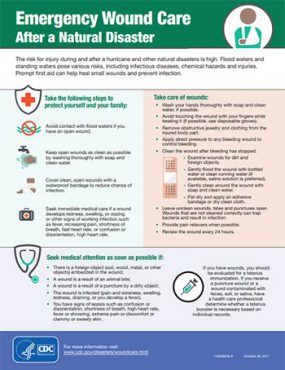
This image is property of www.cdc.gov.
The Importance of Insurance Coverage and Liability Issues
Insurance coverage and liability issues are critical aspects to consider when participating in water sports. Understanding the importance of appropriate insurance coverage and addressing liability concerns can help protect both individuals and organizations involved in these activities.
Understanding Insurance Policies
Understanding the coverage provided by insurance policies is essential to ensure appropriate protection. Different insurance policies may provide different levels of coverage for personal injuries, liability claims, or property damage. Read and familiarize yourself with the terms and conditions of your insurance policies to fully understand the extent of coverage they offer.
Ensuring Adequate Coverage
Ensuring that you have adequate insurance coverage is crucial for protecting yourself from financial liability in the event of an injury or accident. Review your insurance policies periodically to ensure they meet your specific needs and provide sufficient coverage for water sports activities.
Considering Liability Risks
Liability risks can arise in water sports, and it’s important to consider potential scenarios where injury or property damage could occur. Understanding your potential liability as an individual participant or as an organization offering water sports activities allows you to address and mitigate these risks appropriately.
Choosing the Right Insurance Provider
Selecting the right insurance provider is a crucial step in ensuring appropriate coverage. Research and compare different insurance providers, considering factors such as their reputation, customer reviews, responsiveness, and specific coverage options for water sports. Consult with insurance professionals to help you make an informed decision.
Reviewing Exclusions and Limitations
Insurance policies may have exclusions and limitations that outline what is not covered or subject to specific conditions. It is important to review these exclusions and limitations carefully to understand any potential gaps in coverage for injuries or accidents related to water sports activities.
Seeking Legal Advice for Injury Compensation
In the event of an injury or accident in a water sports activity, seeking legal advice may be necessary to understand your rights for compensation. Consult with legal professionals who specialize in personal injury cases to determine the best course of action and to ensure your rights are protected.
Risk Management in Water Sports
Implementing robust risk management strategies is vital for minimizing liability risks and enhancing participant safety. Organizations offering water sports activities should develop risk management plans that include thorough safety assessments, staff training, emergency response protocols, and regular facility inspections. These comprehensive risk management strategies help reduce the likelihood of accidents and minimize potential liability.
Incorporating Safety Measures into Insurance Policies
Insurance providers can promote safety within water sports by incorporating safety measures and requirements into their policies. Encouraging insured individuals or organizations to implement specific safety protocols, provide adequate training, or adhere to industry best practices can help reduce the frequency and severity of injuries and accidents.
Educating Participants on Insurance and Liability
Educating participants on insurance coverage and liability issues is an important aspect of ensuring everyone involved in water sports is informed and protected. Providing clear and concise information on insurance options, liability waivers, and participant responsibilities helps individuals make informed decisions and understand the risks associated with these activities.
Establishing Responsible Waivers and Consent Forms
Requiring participants to sign responsible waivers and consent forms is a common practice to address liability concerns. These legal documents outline the inherent risks associated with water sports and the participant’s acknowledgement of these risks. Consult with legal professionals to ensure these documents are comprehensive, valid, and legally binding.
Conclusion
In conclusion, preventing and treating cuts and abrasions in water sports requires a combination of proactive measures, proper first aid, and a commitment to safety. By wearing protective gear, using proper techniques, and staying vigilant, you can significantly reduce the risk of injuries. It is crucial to promptly clean and dress any wounds that occur, and seek medical attention if necessary. Incorporating preventive measures and maintaining facilities and equipment effectively helps ensure the overall safety of water sport participants. Understanding insurance coverage and liability issues safeguards your financial well-being in case of unforeseen circumstances. By prioritizing safety, seeking professional advice, and promoting education and awareness, you can enjoy water sports with confidence, knowing that you are taking personal responsibility for your well-being. Continued support for safety measures and learning from incidents contribute to the growth of water sport communities and ensure a positive experience for all participants.
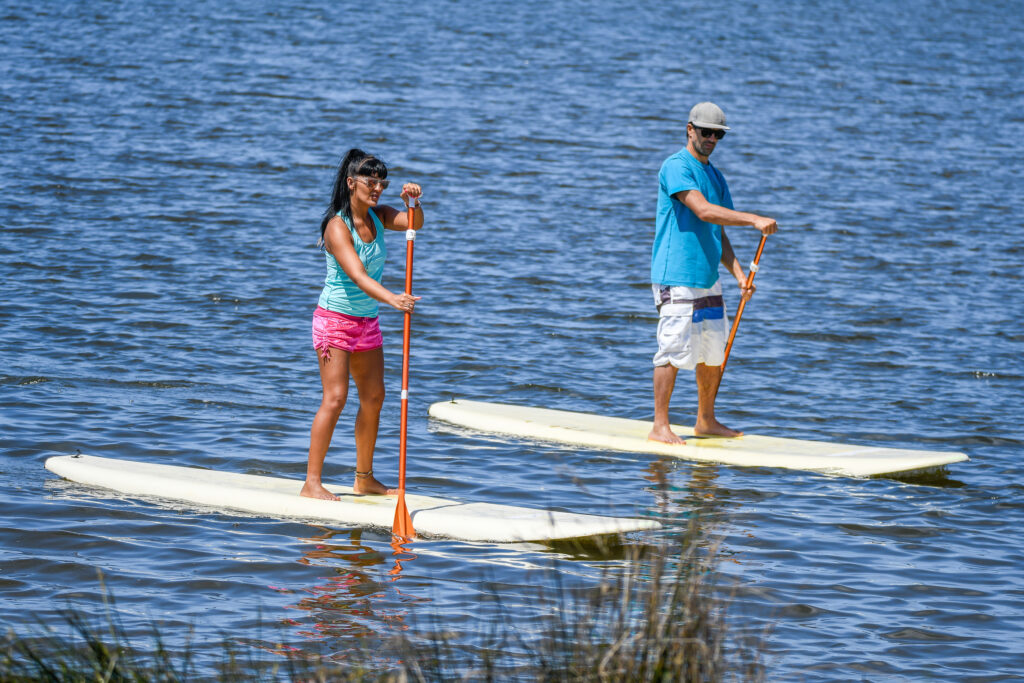
This image is property of www.inyourhometherapy.com.

